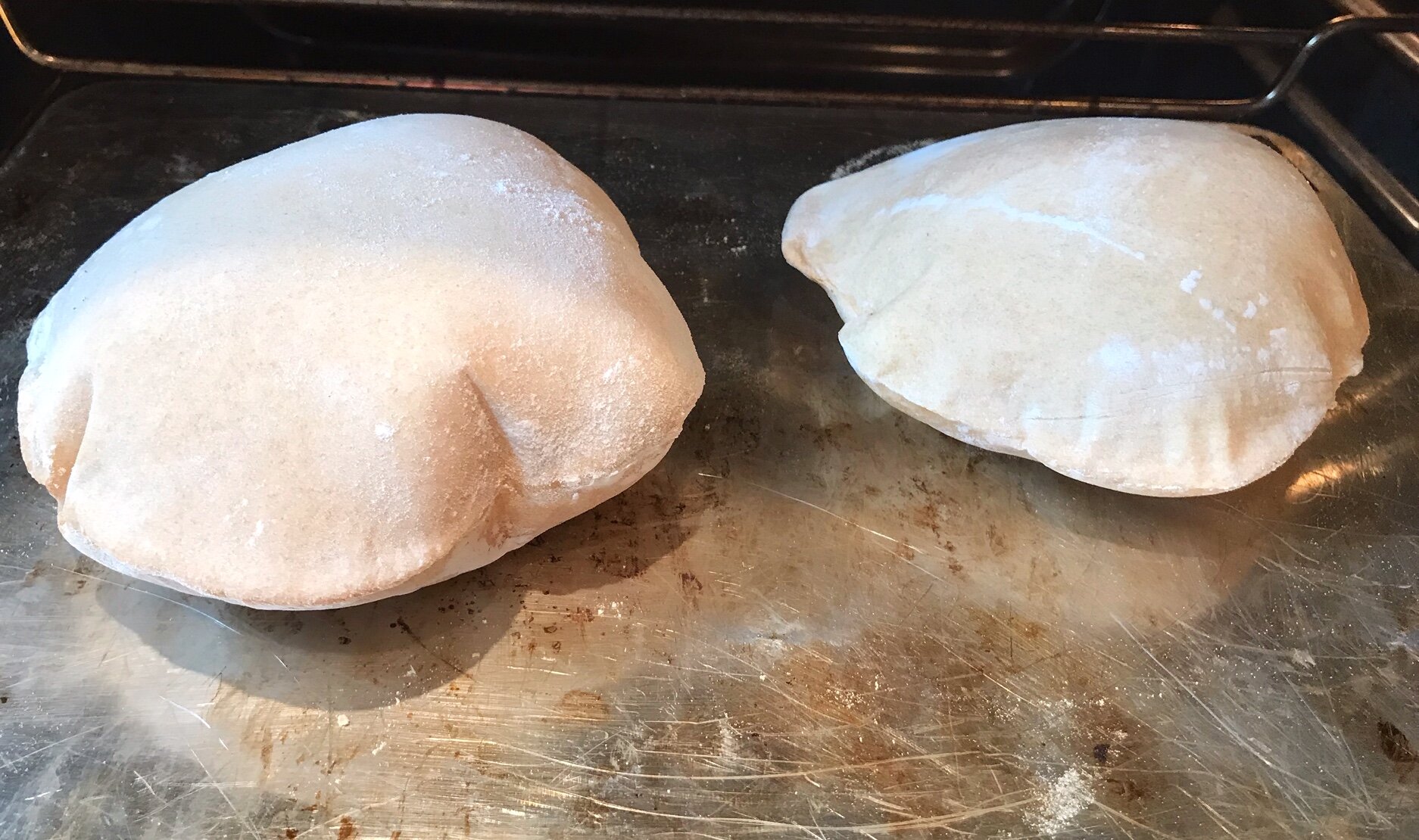There’s nothing like pita bread straight from the oven to scoop up just-made hummus or baba ganoush, swish into a lentil soup, or to wrap around left-overs — drizzled with tahini and hot sauce and brightened with fresh herbs.
It’s not difficult to make pita — or khobz in Arabic — even if you’re not a seasoned baker. And it’s super fun. There’s an incredible reward at the end, when you look into the oven and see those bad boys magically puff up into bready balloons. You can actually watch them inflate!
It’s a lovely, soul-sustaining project to cheer up a day when you’re stuck at home for, ahem, whatever reason. Fresh-baked pita freezes brilliantly, so you can save some for later — or zip some up in a plastic bag and freeze it for an at-risk friend or relative who can’t leave home for groceries. (They’ll be perfect with the soup you made for them!)
During the pita baking process, there is a lot of resting and rising and waiting between steps — perfect moments for whipping up that hummus or baba ganoush, or chopping the vegetables for soup.
We are big consumers of pita at our house, largely thanks to my own personal baba ganoush and hummus addiction. The pitas are usually store-bought, and much to Thierry and Wylie’s chagrin, I usually come home with the whole wheat ones — which honestly are usually more like chewing on particle board than eating bread. In any case, we really consider them vehicles for the dips.
Best is when I can make it up north to my favorite Lebanese bakery and buy the freshly made ones, still warm in their plastic bags. There I usually buy both white ones and whole wheat. The white ones are gloriously puffy, fluffy and delightful; the whole wheat pitas — while undeniably better than the mass-produced ones — are, I have to admit, on the punitive side.
Because pitas are so ubiquitous through the Levant, I kept imagining that they couldn’t be all that hard to make, and learning how was getting higher and higher on my bucket list. Mine could split the difference between white and whole wheat and go fifty-fifty. The pita of my dreams! Surely it was attainable.
A couple months ago, I took the pita plunge — reading everything reliable I could find and starting to play with recipes.
Many of the recipes that looked serious enough for me to want to try them required a stand mixer, which I don’t own. (I never wanted to develop recipes that require one because I don’t feel a stand mixer should be a required piece of kitchen equipment.) Very few of the promising recipes I found called for more than a token amount of whole wheat flour.
Looked as though I’d have to develop my own. To do that I began swapping out whole wheat flour for half of the all-purpose flour in a couple of different recipes, sometimes adding extra water to compensate. Claudia Roden’s method in The New Book of Middle Eastern Food almost got me there, but the dough didn’t rise quite as much as I wanted it to.
Finally, I turned to Anissa Helou’s award-winning Feast: Food of the Islamic World, hopeful about Helou’s method because she has written such wonderful baking books (I love Sweet Middle East and have Savory Baking from the Mediterranean on my wish-list). Also, because pita bread (khobz) is literally the very first recipe in Helou’s 500-plus-page tome, I knew she must take her khobz very, very seriously.
Helou’s recipe calls for instant (fast-acting) yeast, and I wanted to use active dry yeast. (This may be a TMI situation, but active dry yeast keeps for a long time, and I wanted to develop a recipe that could be made without dashing to the supermarket; if you keep active dry yeast, flour, olive oil and salt on hand — which is so easy to do — you’ve got the makings for pita.) So I had to veer from her first few steps, and also had to find the right flour to water ratio.
But I was able to keep the heart of Helou’s method, the part that gets us from shaggy ball of dough to rolled-out discs ready to go into the oven. From Michael Solomonov and Steven Cook’s book Zahav, I borrowed the excellent idea of baking the breads on inverted baking sheets preheated in the very hot oven.
Watching the pitas puff inside the oven is the first payoff.
None of the recipes I consulted warned of what can happen if you let the baked pita breads cool completely before storing leftover breads: They can get stiff and crackly, not what you want. I added Roden’s suggestion to put them in a plastic bag as they come out of the oven, keeping them soft and pliable.
I hope you dive in and give this pita project a go; the process of kneading and rolling and waiting for the dough to rise is so wonderfully tactile, giving such a lovely rhythm to a day spent at home.
And the first payoff — that gasp of delight when you peer inside the oven and see the pita breads poofing up like balloons — is so much fun. The second payoff? That’s when you pull the first one apart and taste it — and marvel that it actually came out of your very own oven. Quick — get the baba ganoush!
OK, OK, enough lallygagging — to the recipe!



